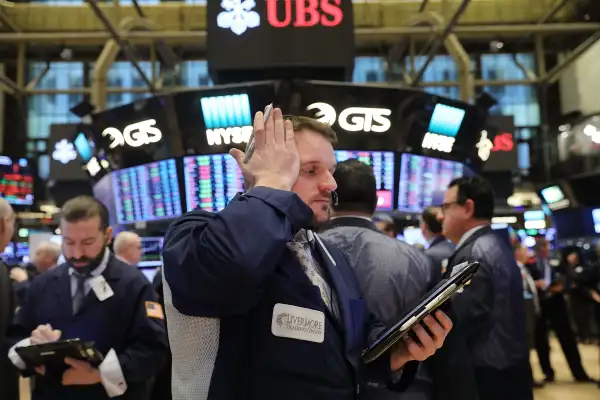The One Mistake Small Investors Always Make When the Stock Market Plunges
Money is not a client of any investment adviser featured on this page. The information provided on this page is for educational purposes only and is not intended as investment advice. Money does not offer advisory services.

Market plunges, like the one that's taken place over the past several days, can make you want to bail out of stocks. That's a mistake lots of small investors have made in the past — putting a big dent in their wealth.
Bear markets can be terrifying, not least because while the stock market often spends weeks or months gradually meandering its way higher, pullbacks can be sudden and sharp, with investors getting jolted out of complacency.
That's what seems to be happening right now.
Since the Dow hit its peak on Jan. 26, it's down more than 2,000 points. (After falling more than 500 points on Tuesday's open, the market recovered and closed Tuesday up more than 500 points.)
It's tempting to sell stocks and pull your money out of the market, at least until the crisis passes. But it's almost always a mistake.
Why is Bailing Out a Mistake?
For one, moving your money out of the markets typically triggers taxes and other transaction costs like brokerage commissions.
But the even bigger reason is that it's difficult to judge when to jump back in.
Upward moves can be sharp and swift too, especially when panic subsides and the traders' confidence returns. (If you doubt it check out this list of the stock market's 20 biggest one-day gains. They didn't take place during late 1990s bull market. They were nearly during the dark days of 1929-32 and 2008-09.)
Unfortunately, small investors have been slow to learn this lesson.
Analysts who track money flows into and out of mutual funds have shown for years that investment dollars come rushing in only after the good times have started — and out after the bad times have already begun. And by the time the market recovers, investors are again late to return to the party.
Mutual fund research firm Morningstar Inc. recently calculated that over the decade between 2007 and 2016 harmful in-and-out trading reduced U.S. investors' long-term average annual returns to 4.36% from 5.15%. While that may not seem like a whole lot, remember the difference amounts to about 15% of their annual returns.
The good news is that there is evidence small investors have gotten savvier in recent years.
For the past decade investors have poured billions into index funds, known for their buy-and-hold approach, while moving money out of funds that aim to pick winning stocks.
While small investors were the driver of past rallies — like the 1990s Internet bubble — fund data suggest they've never become invested in this latest one in quite the same way. What's more there are also new tools from target-date funds in 401(k) retirement plans to so-called robo-advisers designed to help investors keep their nerve.
Let's hope that this time around, small investors have learned to play it cool.
